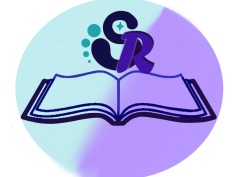Supporting Education For All
Over view:
Special needs is a broad term used to describe individuals who require additional support or accommodations to access and benefit from the educational environment, the workplace, or the community. These individuals may have physical, cognitive, sensory, emotional, or behavioral challenges that require specialized interventions and individualized educational plans.
Some common examples of special needs include:
Learning disabilities such as dyslexia, dyscalculia, and ADHD
Physical disabilities such as cerebral palsy, spina bifida, and muscular dystrophy
Sensory disabilities such as blindness, deafness, and low vision
Intellectual disabilities such as Down syndrome and Fragile X syndrome
Developmental disabilities such as autism spectrum disorder
Emotional and behavioral disorders such as anxiety, depression, and oppositional defiant disorder
It is important to note that special needs is not a monolithic category. Individuals with special needs have a wide range of abilities and challenges, and their needs may vary significantly. It is important to treat each individual as a unique person and to provide them with the support and accommodations that they need to succeed.
Here are some ways to support people with special needs:
Be patient and understanding. It may take people with special needs more time to complete tasks or to understand instructions.
Be respectful and inclusive. Treat people with special needs with the same dignity and respect that you would treat anyone else. You can’t connect the dots looking forward; you can only connect them looking backwards. So you have to trust that the dots will somehow connect in your future.
Special needs education can be promoted in the New Curriculum through the following ways :
Make the curriculum more inclusive. This means ensuring that the curriculum is designed to meet the needs of all learners, including those with special needs. This can be done by using a variety of teaching methods and materials, and by providing students with opportunities to learn in different ways.
Provide professional development for teachers on special needs education. Teachers need to be equipped with the knowledge and skills to teach students with special needs effectively. This can be done through professional development workshops, online courses, and other resources.
Increase collaboration between special education teachers and general education teachers. Special education teachers and general education teachers can work together to develop and implement individualized education plans for students with special needs. They can also collaborate to create a more inclusive learning environment for all students.
Provide students with disabilities with access to the same resources and opportunities as their peers without disabilities. This includes access to extracurricular activities, sports, and other enrichment programs.
Educate the school community about special needs. This includes educating students, teachers, administrators, and parents about the different types of special needs and how to support students with special needs.
Here are some specific examples of how to promote special needs education in the new curriculum:
Use universal design for learning (UDL) principles. UDL is a framework for designing learning experiences that are accessible to all learners, regardless of their abilities. UDL principles can be applied to all aspects of the curriculum, from lesson planning to assessment.
Provide students with multiple ways to represent information, engage with learning activities, and express their understanding. For example, you could provide students with text, audio, and video versions of the same information. You could also offer students a variety of ways to complete assignments, such as writing a report, creating a presentation, or designing a poster.
Use differentiated instruction to meet the individual needs of all learners. This means providing students with different levels of support and challenge, depending on their needs. For example, you could provide students with more scaffolding or more challenging assignments.
Use formative assessment to monitor student progress and make adjustments to instruction as needed. This includes using a variety of assessment methods, such as observation, portfolios, and quizzes.
Provide students with opportunities to collaborate with their peers. This can help students to learn from each other and to develop social skills.
By promoting special needs education in the new curriculum, we can help to ensure that all learners have the opportunity to reach their full potential.

Leave a Reply